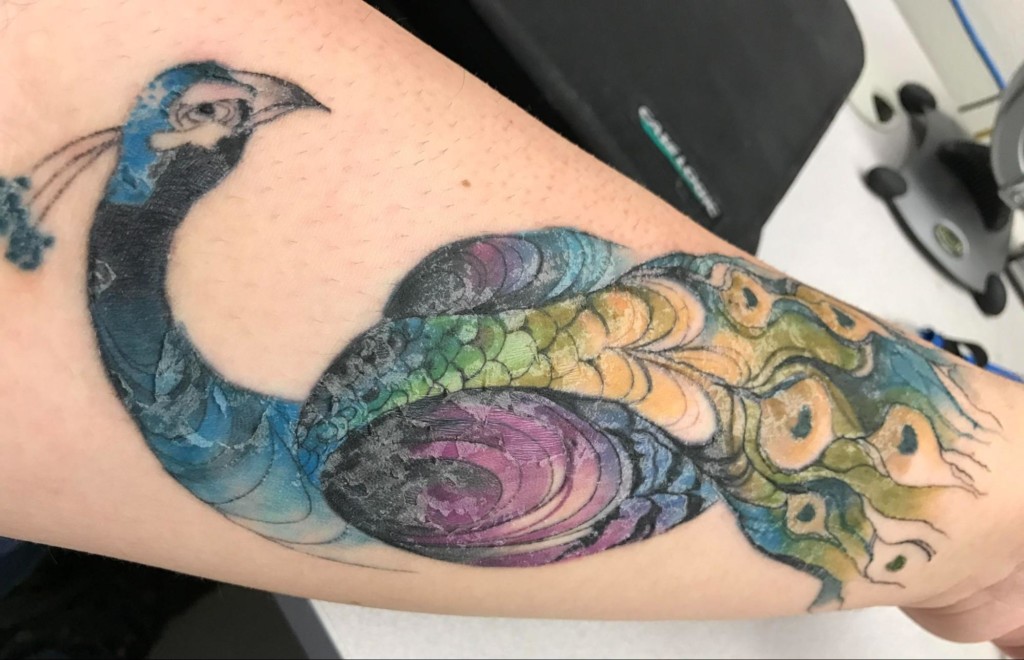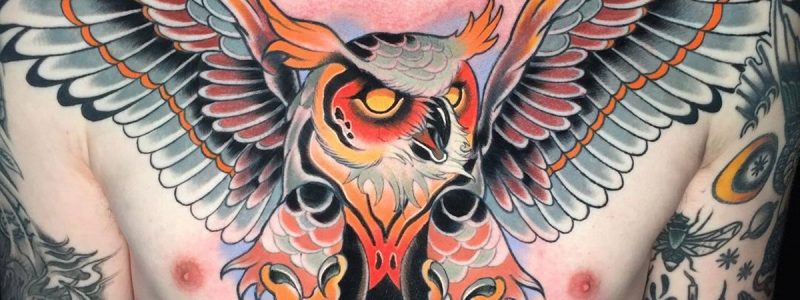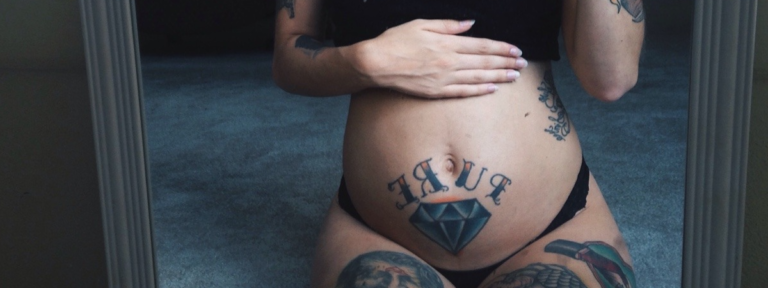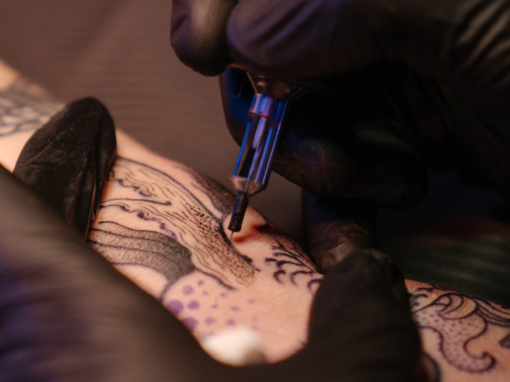Getting a new tattoo is very exciting. Whether it is your first or tenth tattoo, the excitement of getting a new ink is still the same. The aftercare though might be a little confusing for the first-timers. Fortunately, we are here to help you make the process easy and stress-free. From what you should know even before you get tattooed to what to do first when getting back home. How to care for your fresh tattoo on the first days and then until it heals several weeks after. Some insights from professional tattoo artists and tattoo collectors to help your healing process and ensure the best outcome. The signs of complications and how not to get any. We’ve collected everything you need to know here, so you don’t need to search around the internet for answers.
Why Aftercare Is Important
Not everybody realizes that tattooing is not just a cosmetic, but also a medical procedure. The tattoo artist creates stunning artwork on your skin, but to do so they puncture your skin with fast-moving needles and inject the ink deep into the dermis. This means that your new tattoo is also a wound. Improper aftercare can ruin the entire work and leave your tattoo dull and spotted, not to mention that a fresh tattoo is prone to infections. By caring for your tattoo from the start you will have a beautiful piece of art on your skin for years.
Essential Tips Before Getting Tattooed
The process of getting a tattoo starts long before you get into the studio and finishes months after the tattooing session. Here are some tips on how to prepare for the session:
- Get a good night’s sleep. The process of tattooing is a stress for your body, so don’t put even more stress on yourself by not getting enough sleep beforehand.
- Do not consume alcohol or drugs before (and especially during) the session.
- It will not help with the pain! Alcohol makes your blood thinner and will make you bleed more during the session.
- Eat well before the session. You may be in for a long session and once started you cannot stop your tattoo artist to go and get a snack.
- Stay hydrated. Hydrating your body keeps your skin hydrated as well, and your tattoo will look best when your skin looks best.
It is worth mentioning that you should meet with your tattoo artist before getting tattooed. Trusting your artist and the studio when you come in for a session is important and will put you at ease during the process of getting a tattoo.
What To Do After: A Step by Step Guide

When your tattoo is finished, the artist will apply antibiotic ointment and wrap it with a bandage or plastic wrap. From there on it is your responsibility to take good care of your fresh ink.
Day 1
- The bandage, or plastic wrap, is there to stop the initial bleeding and prevent any contamination. Leave it for at least one hour but not more than 5 hours. Ideally, remove it before three hours have gone.
- Once you get home, wash your hands with unscented antibacterial soap, and keep washing for those 30 seconds, we all have learned the drill by now. It is very important to use unscented and alcohol-free products for tattoo aftercare (the least chemicals, the better). Gently wash your tattoo with your hands. Use the same unscented soap and make lather in your hands, do not rub the soap directly onto your fresh tattoo. Rinse with warm water.
- Pat the tattoo dry with paper towels. Do not rub or wipe and leave it for approximately 10 minutes to make sure it is completely dry. Do not use cloth towels as they collect dead skin cells and bacterias.
- Once your skin is dry on the tattooed area, apply a thin layer of unscented antibacterial ointment, such as Aquaphor Healing Ointment. Do not use too much of a product, let your tattoo breathe, it will help the healing process and prevent trapping the moisture. Your skin should not show any signs of an ointment after 5 minutes of applying, if your skin is still shiny, — you used too much, just pat the area with paper towels to remove any excess. Before going to bed, repeat the process.
- It is best to wear loose cotton clothes of dark colors the first 2 nights as your tattoo will ooze some excess ink, plasma and might bleed.
Useful Tips:
- Generic antibacterial soap works just as well for tattoo aftercare as specialty brand soaps.
- Make sure the products you use are unscented. The fragrances used in the soap and lotion products react to skin chemistry and can cause an allergic reaction, scarring, and premature fading of the ink.
- Do not use Neosporin. It can cause an allergic reaction.
- Always wash your hands for at least 30 seconds before touching your fresh tattoo. You can also use gloves.
- The warmer the water, the easier it is to remove dried blood and plasma from the tattoo.
- If you must use a cloth towel, make sure no one has used it before and be extra gentle patting your tattoo dry.
- Do not rebandage your tattoo. The only exception is when your tattoo artist uses special tattoo film, such as Secondskin or Saniderm, which is breathable and can stay for up to three days (but usually recommended for 24 hours). Always follow your artist’s instructions on the topic.
- Use worn sheets on your bed. It is softer on your skin and you will probably stain your sheet the first couple of nights as your tattoo will be leaking some excess ink.
Day 2 – 3

Your tattoo is still a fresh wound and must be treated as such. You will see some scabs forming on your skin, which is completely normal, do not pick them and do not scratch your tattoo. Just repeat the same routine from the first day 2-3 times a day. Wear comfortable loose clothing and make sure your fresh ink is covered from exposure to the sun. You can start using sunblock once your tattoo is finished peeling.
Plus, dry healing makes you itch a lot more and you can use all-natural moisturizers like shea butter to avoid chemicals.
First Week

Keep washing your tattoo in the same manner 2 – 3 times a day. From now on you can start applying moisturizer. Again, make sure the products you are using are unscented and alcohol-free. You can also opt for a specialty brand or a tattoo goo, ask your artist for recommendations. Another good option is coconut oil or shea butter as a fully organic sans chemical alternative. By this time redness should go away completely. You will notice that your tattoo is becoming dull, don’t worry this is normal, soon your skin will start peeling and revealing the true beauty of your tattoo.
Week 2 – 4

In this final stage of tattoo healing, you will see it peeling excessively. It will still be dry, so keep your moisturizer close. All scabs, redness, and puffiness should go away after the first week. Once your tattoo is clear of all the peels, you can start using sunblock, go to a swimming pool, beach, use a sauna or hot tub. By the end of week 4, your tattoo should clear up completely, however it will still be healing on the lower layers of the skin and it may take up to 3 months to heal completely.
Do’s and Don’t’s in Tattoo Aftercare
Here we gathered a guideline for you, to make sure your new tattoo heals fast, comfortably, and without complications.
Short Term
Follow these guidelines during the first 3 – 4 weeks, while your tattoo is healing.
Do
- Follow your artist recommendations. While the basics are the same, your tattoo artist will give you their aftercare recommendations based on your specific case.
- Keep it clean. Do not forget to wash your fresh tattoo several times during the day
- Keep it dry. Make sure it is dry before applying lotion.
- Use unscented and alcohol-free products.
- Let it breathe when moisturizing and only use a small amount of a product.
- Use moisturizer (even though some people practice dry healing, when you follow all the steps of tattoo aftercare except moisturizer, keep in mind it will make your tattoo more itchy and even uncomfortable).
- Take it easy. Your body is working hard on healing that tattoo, help yourself, and do not overexert yourself.
- Keep your pets away. While your tattoo is healing try to keep it as clean as possible.
- Drink water. Keep your skin hydrated from within.
- Use moisturizers.
- Use sunblocks. Long exposure to the sun will lead to premature fading of the ink
- Consider touch-ups. You may want to do touch-ups in time to keep your tattoo looking brand new even after years of wearing it.
Don’t
- Soak your tattoo. Excessive moisture is a breeding ground for bacterias that you do not need.
- Rub, scratch, pick at scabs, and peels. This may lead to scarring and damaging your tattoo.
- Go swimming, use a swimming pool, sauna, or hot tub. It will expose your fresh tattoo to the bacterias.
- Expose it to the sun. Cover your healing tattoo with loose clothes or a bandage.
- Go to the gym. You will risk getting your tattoo infected. Try to avoid excessive sweating until your tattoo stops peeling.
- Touch your tattoo too often, especially if your hands are not clean.
- Wear clothes with scratchy fabrics as it may cause irritations.
- Excessive weight loss or gain may deform your tattoo.
Possible Complications and Ways To Avoid Them

If your artist and you followed the necessary precautions you get a stunning piece of art on your skin that you will love. However, it is important to know about potential complications and how to recognize them.
Rash
The most common complication is an allergic reaction to the ink. You will see a red bumpy rash that is usually itchy if you have an allergic reaction to your tattoo. These reactions can be tricky as they can appear days and even months or years after tattooing, however usually appear on a person with other allergies. Usually, the treatment includes topical application of an ointment, but you should consult with your doctor before applying any medication.
Infection
Not so common, but still can happen, are infections. Your tattoo can become infected for various reasons during the process of tattooing or healing. The signs of infections are swelling of the tattooed area, fever, tenderness, and pain on the tattooed area after one week, raised hardened skin, puss, or other substances draining from the tattoo. If you are experiencing any of the signs, you should see your doctor and inform your tattoo artist immediately.
To avoid it always make sure your tattoo artist wears gloves, opens single-use equipment in front of you, and sterilizes not single-use parts of a tattoo gun, table, and the place on which they will be tattooing you and follow our guide for your tattoo aftercare.
Blood-Borne Infections
Blood-borne infections can be contracted during the process of tattooing and include Staphylococcus aureus, Hepatitis, and HIV. According to the Centers for Disease Control and Prevention (CDC), the cases of getting fungal infections are very rare, and HIV is none, but if the sanitary practices are not in use, there is a theoretical possibility.
Important:
- If you have an autoimmune disease, always schedule your tattoo appointment when your condition is under control to not cause a flare-up.
- Consult with your doctor if you have skin conditions like eczema or psoriasis. There had been reports stating that the fresh tattoo may cause a flare-up of a disease.
- Avoid tattooing over the moles (always choose an area clear of any moles or discoloration for a tattoo as it will be hard to see any worrying signs of a skin condition under the ink).
- Wait for 2 – 4 weeks after taking antibiotics.
- Consult with your doctor if you are on immunosuppressive therapy, as it will affect the healing process and can cause complications.
- Tell your tattoo artist if you have a blood disorder or taking blood-thinning medicine (this includes aspirin).

Tattoos are the representation of a person and their personality, it is a commitment for life after all! Take good care of your new tattoo from the beginning and enjoy it for years to come.
FAQ
💪 After Getting a Tattoo, How Long Should I Wait Before Going to the Gym?
You should wait until your tattoo is clear of all the peels (week 3 – 4) before going to the gym. Going to the gym is very risky while the tattoo is healing. Gyms are not the cleanest of places, so the chances of getting bacteria infection are high. On top of that, excessive sweating affects the healing process.
🏄 How Long Should I Wait Before Going to the Beach or Swimming Pool?
It is a bad idea to soak your tattoo until it is fully healed (week 3 – 4). You may lose ink if your skin is soaked for a long time. Swimming pools and seawater are risky because of the bacterias in it. Also, you should try to avoid exposure to the sun while your tattoo is healing.
🧴 Can I Use My Everyday Products for Tattoo Aftercare?
You can use generic cosmetic brands, however, it is highly recommended to use fragrance and alcohol-free products.
🩹 Is Bleeding Normal After a Tattoo Is Done?
Yes. You will notice plasma and blood on your tattoo for the first 2-3 days. You may also bleed if you pick your scabs, or if they crack. It is best to use moisturizer during the healing process to prevent cracking and ease itchiness.
🤕 How Long Will It Hurt?
You will feel sore from 3-6 days, depending on the size and complexion of your tattoo. If you feel pain, fever, or your tattoo feels warm and still redden after 1 week, you should see a doctor.





